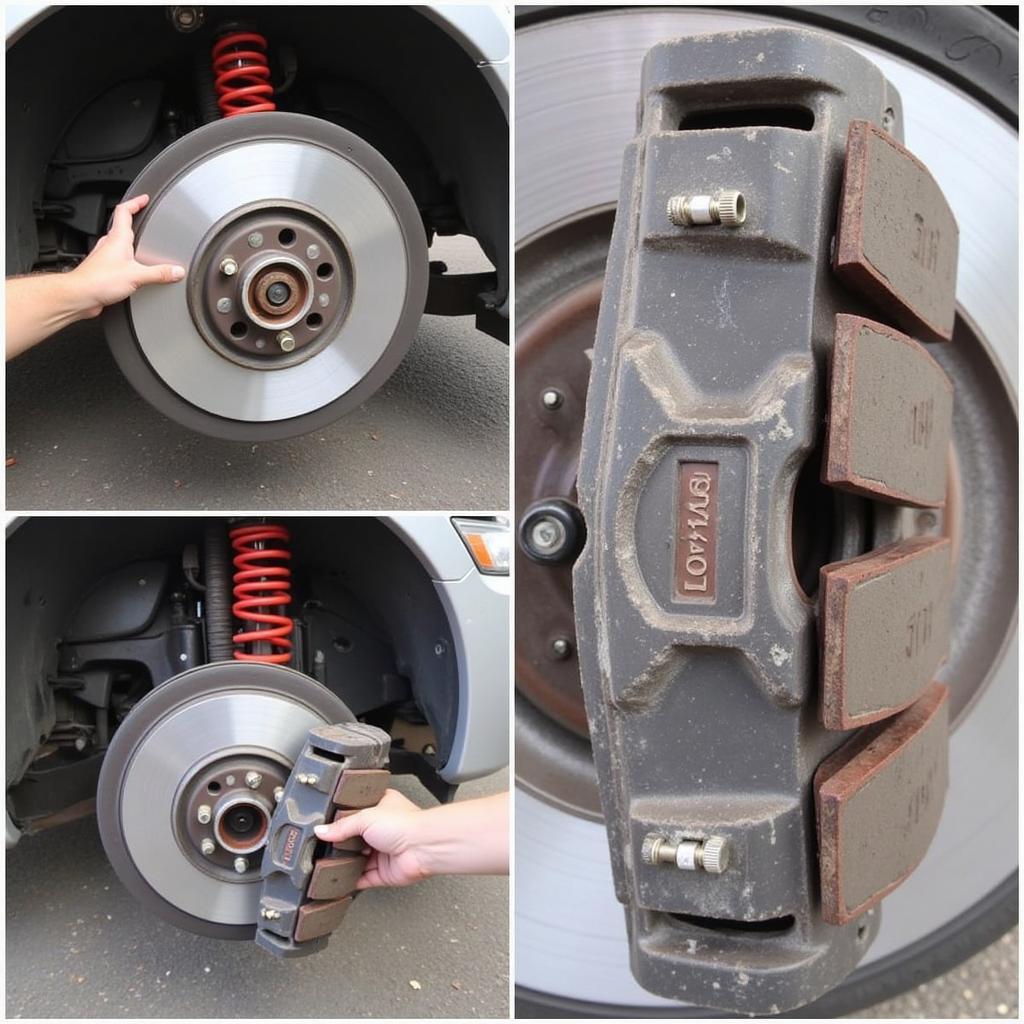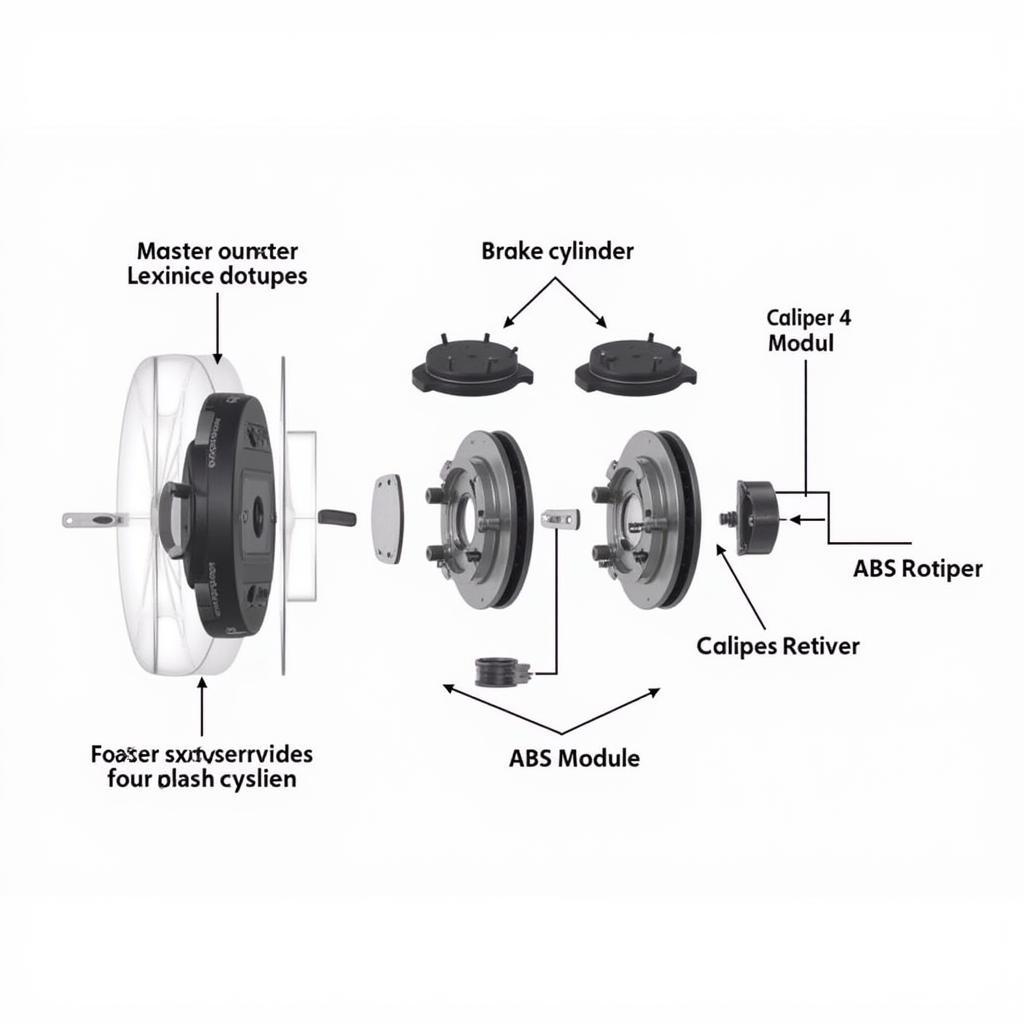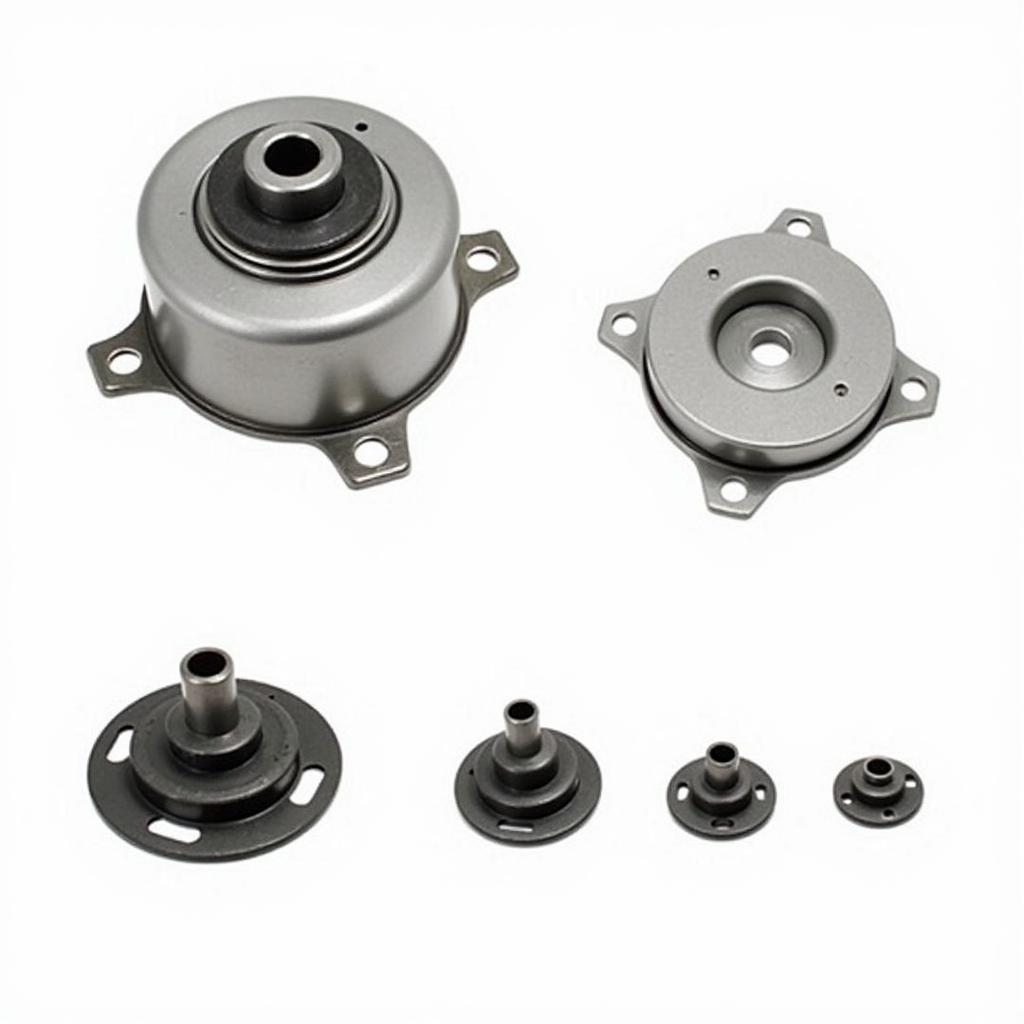The brake warning light on your dashboard is a crucial safety feature in your 2006 Ford F150 XLT SuperCab. When illuminated, it signals a potential issue with your braking system that requires immediate attention. Ignoring this warning could lead to reduced braking performance and increase the risk of an accident.
This comprehensive guide delves into the common causes of a brake warning light on a 2006 Ford F150 XLT SuperCab, possible solutions, and preventative measures to ensure your truck stays safe and reliable.
Common Causes of a Brake Warning Light
Several factors can trigger the brake warning light in your F150. Here’s a breakdown of the most common culprits:
- Low Brake Fluid Level: The most frequent reason for the warning light is a drop in brake fluid. Brake fluid is essential for transmitting force from your brake pedal to the wheels. A leak in the brake lines, calipers, or wheel cylinders can result in low fluid levels.
- Worn Brake Pads: Brake pads wear down over time due to friction. When the pads become too thin, a sensor sends a signal to the brake warning light, indicating the need for replacement.
- Faulty Brake Light Switch: The brake light switch activates the brake lights when you press the brake pedal. If this switch malfunctions, it can also trigger the brake warning light.
- ABS Issue: Your F150 is equipped with an Anti-lock Braking System (ABS). A problem with the ABS module, wheel speed sensors, or related wiring can illuminate the brake warning light.
- Parking Brake Engaged: While a seemingly obvious reason, accidentally leaving the parking brake partially engaged can also trigger the warning light.
Diagnosing the Problem
Identifying the root cause of the brake warning light requires a systematic approach:
- Check the Parking Brake: Ensure the parking brake is fully released.
- Inspect Brake Fluid Level: Carefully open the brake fluid reservoir located under the hood. If the fluid level is below the “MIN” mark, there’s a leak that needs addressing.
- Visually Inspect the Brake System: Examine the brake lines, hoses, calipers, and wheel cylinders for any signs of leakage or damage.
Solutions and Repairs
- Adding Brake Fluid: If you discover low brake fluid and no visible leaks, carefully add DOT 3 brake fluid to the reservoir until it reaches the “MAX” line. However, it’s crucial to remember that simply adding fluid without addressing the underlying leak is a temporary fix.
- Brake Pad Replacement: Worn brake pads necessitate replacement. It’s often best to replace pads on both axles simultaneously to ensure even braking performance.
- Brake Light Switch Replacement: A faulty brake light switch requires replacement, a relatively simple procedure for a mechanic.
- Professional Diagnostics for ABS Issues: Diagnosing and repairing ABS issues often necessitates specialized equipment and expertise. It’s recommended to consult a qualified mechanic for accurate diagnosis and repair.
 Replacing Brake Pads on a 2006 Ford F150
Replacing Brake Pads on a 2006 Ford F150
Preventative Measures
- Regular Brake Inspections: Schedule brake inspections with every oil change or at least annually.
- Timely Brake Fluid Flush: Consult your owner’s manual for the recommended brake fluid flush intervals, typically every 2-3 years.
- Address Warning Signs Promptly: Never ignore the brake warning light or any unusual noises or sensations when braking.
“Regular brake maintenance is not just about safety; it’s about peace of mind. Investing in preventative care can save you from costly repairs and keep you safe on the road.” – John Smith, ASE Certified Master Technician
Conclusion
The brake warning light on your 2006 Ford F150 XLT SuperCab is a critical safety indicator. By understanding the common causes, taking preventative measures, and addressing issues promptly, you can ensure your braking system remains in peak condition for safe and reliable driving.
Remember, if you’re uncertain about diagnosing or repairing brake problems, it’s always best to consult a qualified mechanic to ensure your safety and prevent further damage to your vehicle.


